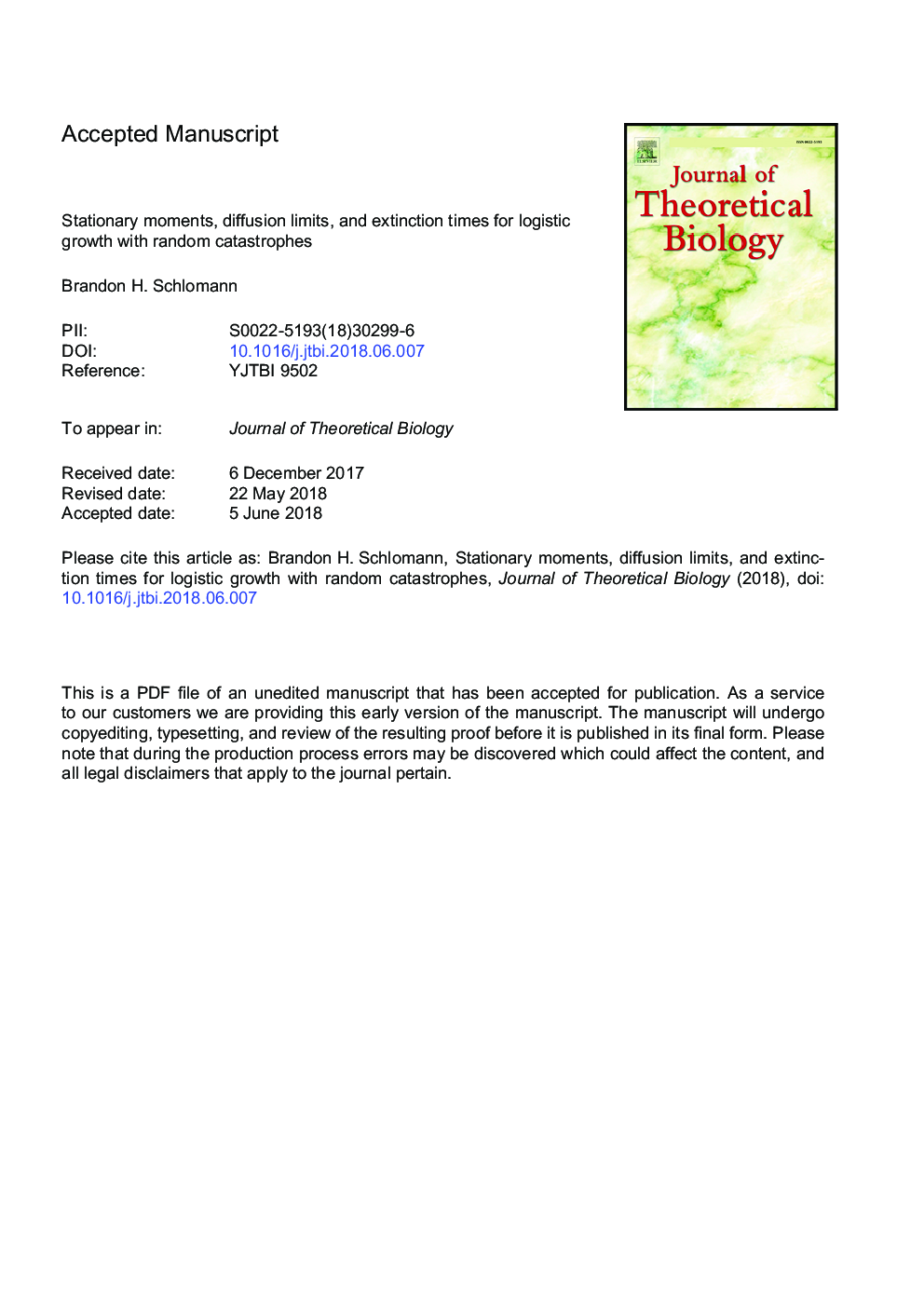| Article ID | Journal | Published Year | Pages | File Type |
|---|---|---|---|---|
| 8876556 | Journal of Theoretical Biology | 2018 | 34 Pages |
Abstract
A central problem in population ecology is understanding the consequences of stochastic fluctuations. Analytically tractable models with Gaussian driving noise have led to important, general insights, but they fail to capture rare, catastrophic events, which are increasingly observed at scales ranging from global fisheries to intestinal microbiota. Due to mathematical challenges, growth processes with random catastrophes are less well characterized and it remains unclear how their consequences differ from those of Gaussian processes. In the face of a changing climate and predicted increases in ecological catastrophes, as well as increased interest in harnessing microbes for therapeutics, these processes have never been more relevant. To better understand them, I revisit here a differential equation model of logistic growth coupled to density-independent catastrophes that arrive as a Poisson process, and derive new analytic results that reveal its statistical structure. First, I derive exact expressions for the model's stationary moments, revealing a single effective catastrophe parameter that largely controls low order statistics. Then, I use weak convergence theorems to construct its Gaussian analog in a limit of frequent, small catastrophes, keeping the stationary population mean constant for normalization. Numerically computing statistics along this limit shows how they transform as the dynamics shifts from catastrophes to diffusions, enabling quantitative comparisons. For example, the mean time to extinction increases monotonically by orders of magnitude, demonstrating significantly higher extinction risk under catastrophes than under diffusions. Together, these results provide insight into a wide range of stochastic dynamical systems important for ecology and conservation.
Related Topics
Life Sciences
Agricultural and Biological Sciences
Agricultural and Biological Sciences (General)
Authors
Brandon H. Schlomann,
